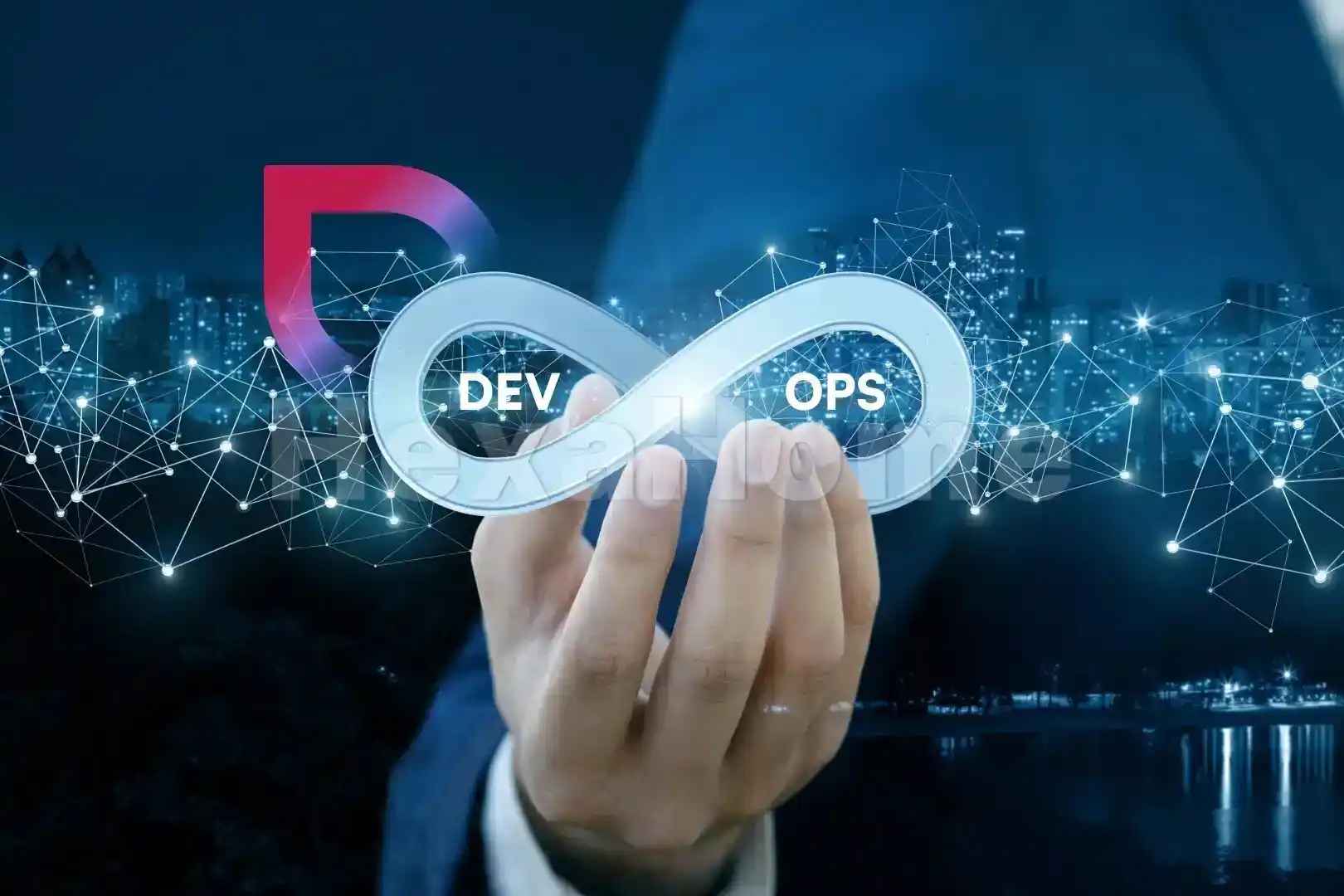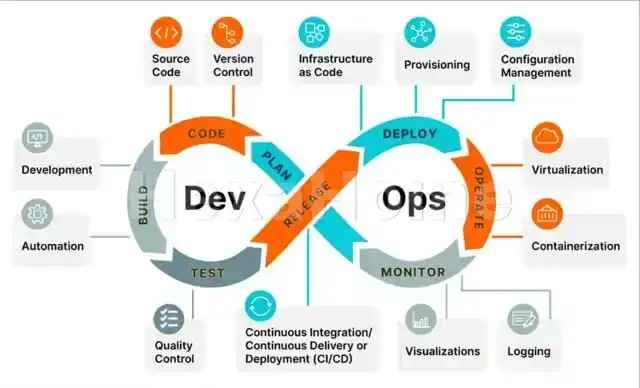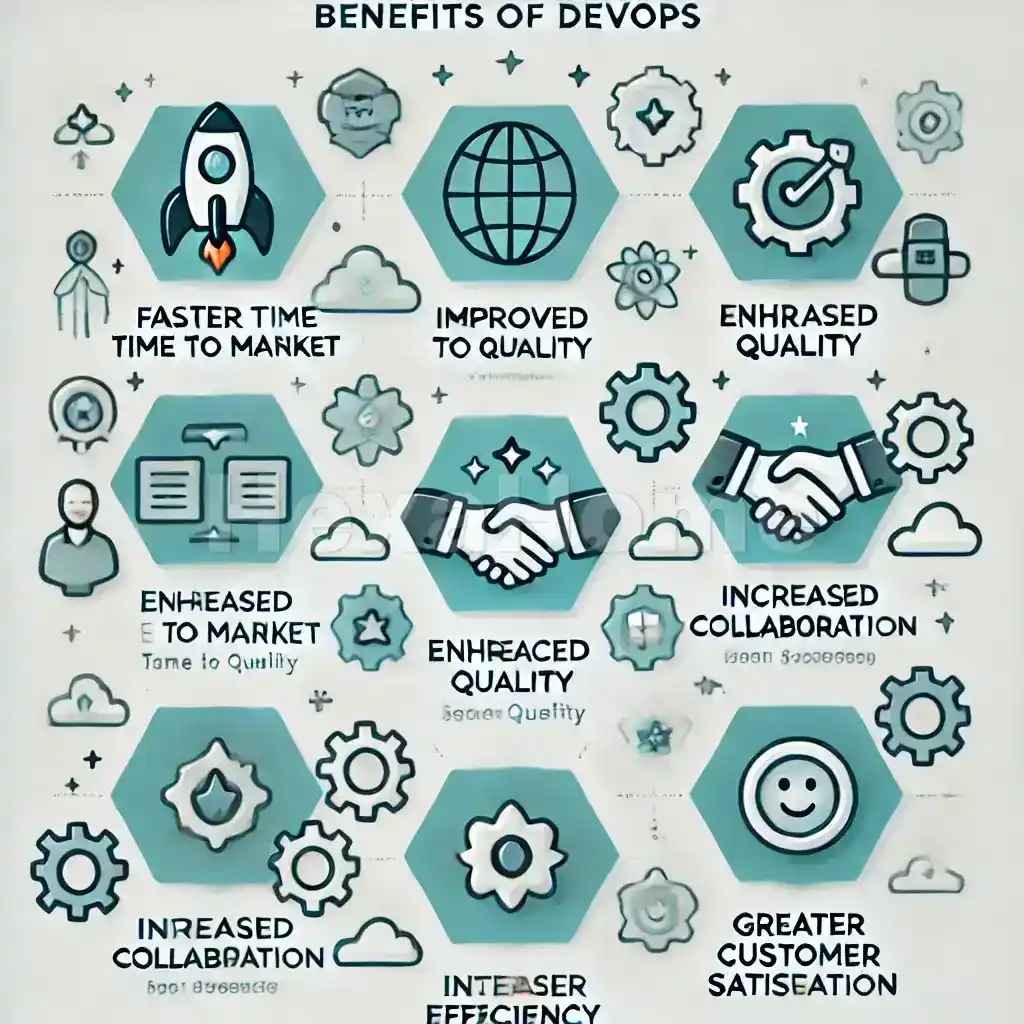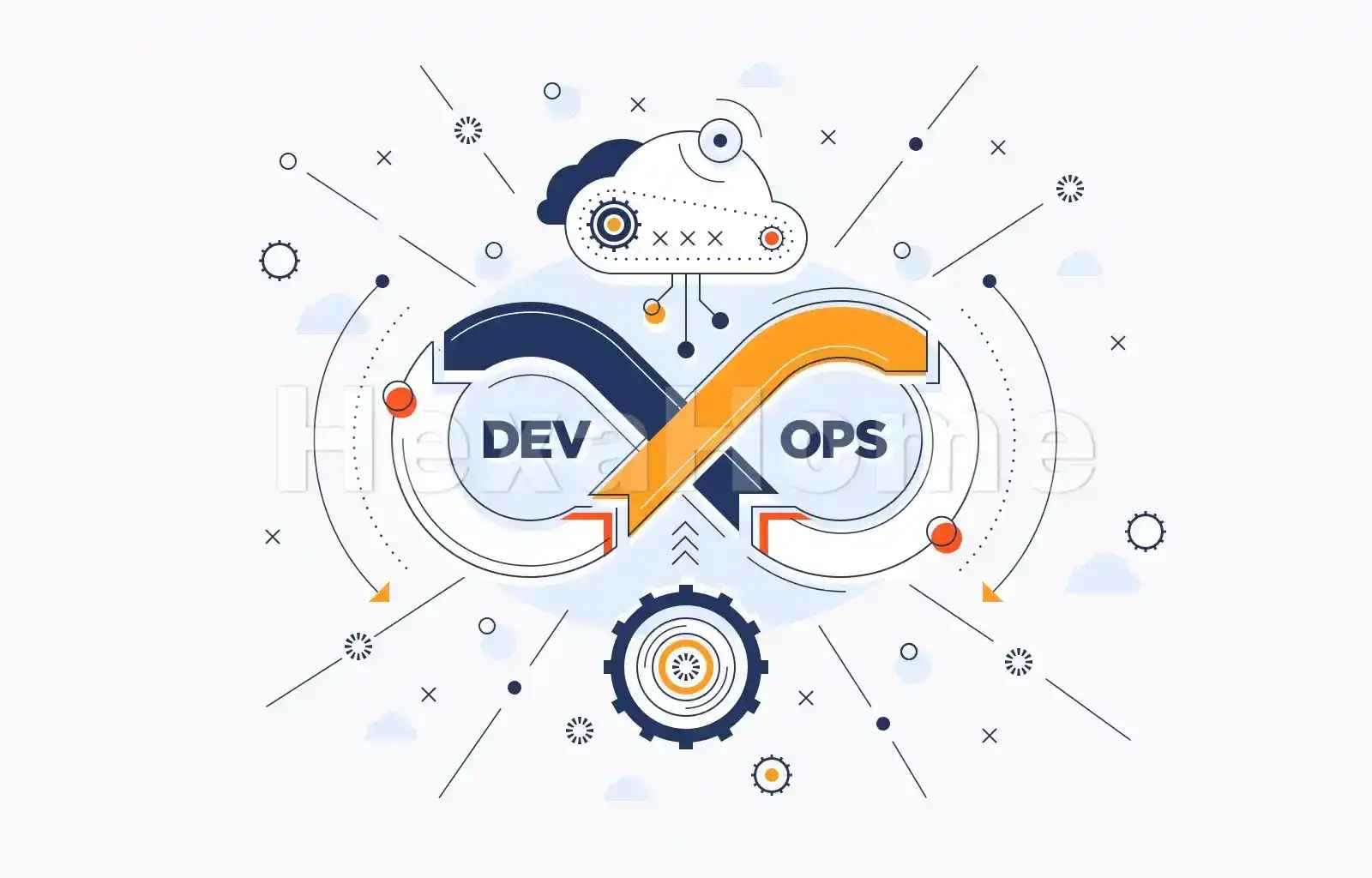DevOps: Integrating Development and Operations for Efficiency
Updated on : 19 November, 2024, 15:00 IST

Image Source: freepik.com
Table Of Contents
What is DevOps?

Image Source: orangematter.solarwinds.com
DevOps is a set of practices that combines software development (Dev) and IT operations (Ops) to improve collaboration, increase efficiency, and deliver software more rapidly. The core principles of DevOps include:
- Collaboration: Breaking down silos between development and operations teams to foster a culture of shared responsibility.
- Automation: Utilizing automation tools to streamline repetitive tasks such as testing, deployment, and monitoring.
- Continuous Integration and Continuous Deployment (CI/CD): Implementing processes that allow for frequent code changes and automated deployments to production environments.
- Monitoring and Feedback: Establishing mechanisms for continuous monitoring of applications in production to gather feedback for ongoing improvement.
The Benefits of DevOps

Image Source: AI-Generated
- Faster Time to Market: Streamlining development processes to reduce time-to-market.
- Improved Quality: Identifying defects early through continuous testing.
- Enhanced Collaboration: Encouraging better communication and teamwork.
- Increased Efficiency: Automating repetitive tasks to focus on strategic initiatives.
- Greater Customer Satisfaction: Delivering high-quality features rapidly for better user experiences.
Key Practices in DevOps
- Continuous Integration (CI):Automatically integrating code changes into a shared repository several times a day, maintaining a stable codebase.
- Continuous Delivery (CD):Preparing code changes for production automatically, enabling on-demand deployments.
- Infrastructure as Code (IaC):Managing infrastructure through machine-readable files for consistent automation across environments.
- Monitoring and Logging:Continuous monitoring identifies performance issues, while logging aids in quick troubleshooting.
Essential Tools for DevOps
| Tool Category | Popular Tools | Description |
|---|---|---|
| Version Control | Git | Distributed version control system for source code tracking. |
| Continuous Integration/Delivery | Jenkins, CircleCI, GitLab CI | Automation servers facilitating CI/CD pipelines. |
| Containerization | Docker, Kubernetes | Tools for creating, deploying, and managing containers. |
| Configuration Management | Ansible, Puppet | Automating deployment and infrastructure management. |
| Monitoring | Prometheus, Grafana | Real-time application monitoring and metrics visualization. |
Real-World Applications of DevOps
- Financial Services:
In the financial services sector, DevOps practices such as Continuous Integration and Continuous Delivery (CI/CD) pipelines play a crucial role in enhancing the speed and security of application delivery. Financial institutions like banks and insurance companies deal with large volumes of sensitive data and are held to high regulatory standards. By adopting DevOps, these organizations can rapidly push out updates while ensuring compliance with security protocols and regulations. Automation of testing, deployment, and monitoring significantly reduces human error, ensuring the security and integrity of applications while speeding up delivery cycles. As a result, banks can respond faster to customer demands and market changes, improving overall customer satisfaction and staying competitive in a fast-evolving industry. - E-commerce:
E-commerce businesses rely heavily on delivering customer-centric features quickly to maintain a competitive edge in a fast-paced market. With DevOps, companies like Amazon and eBay can rapidly deploy updates, enhancements, and new features to their platforms based on real-time user feedback. Through CI/CD pipelines, development teams can release features such as personalized shopping experiences, enhanced payment processing, and dynamic pricing algorithms without delays. This ensures that customers always have access to the most up-to-date and seamless shopping experience, helping e-commerce platforms stay ahead of competitors. Additionally, DevOps practices help e-commerce companies scale their platforms efficiently during high-demand periods like Black Friday or holiday sales. - Healthcare:
In the healthcare industry, maintaining compliance with regulations such as HIPAA (Health Insurance Portability and Accountability Act) while improving operational efficiency is critical. DevOps methodologies help healthcare organizations streamline their software development processes, ensuring that applications are regularly updated, thoroughly tested, and deployed with minimal manual intervention. Automated testing and deployment help ensure that any updates to healthcare applications meet compliance standards without introducing errors. For example, software used for managing patient records, telemedicine platforms, and healthcare management systems can be updated quickly and securely. This leads to faster delivery of new functionalities, improved patient care, and better overall management of health data. - Telecommunications:
In the telecommunications industry, providing reliable network services is paramount, and rapid service rollouts are necessary to meet customer demand. With DevOps practices, telecom companies can accelerate the delivery of network enhancements, security patches, and new services. By automating the deployment process and employing CI/CD pipelines, telecommunications companies can ensure that new services, such as improved network speeds, security updates, and troubleshooting tools, are deployed swiftly and reliably. The automation of testing and deployment reduces downtime and improves network reliability. As a result, telecom providers can offer more stable services to their customers, ensuring continuous service quality while rolling out new, innovative features.
Challenges in Implementing DevOps
- Cultural Resistance: Overcoming traditional siloed approaches.
- Tool Overload: Choosing the right combination from numerous tools.
- Skill Gaps: Finding talent with expertise in both development and operations.
Future Trends in DevOps

Image Source: integrio.net
- AI in DevOps: Predictive analytics and anomaly detection.
- DevSecOps: Integrating security throughout the lifecycle.
- Serverless Computing: Abstracting infrastructure concerns.
- GitOps: Using Git repositories for infrastructure management.
Conclusion
DevOps represents a cultural and technical shift that improves software development processes through collaboration, automation, and innovation. By adopting DevOps principles, organizations can enhance efficiency, quality, and customer satisfaction.
Whether you're a startup or an enterprise, DevOps offers the roadmap to delivering better products faster and gaining a competitive edge in the digital landscape.


